Regionalisation in practice: Rio Grande do Sul
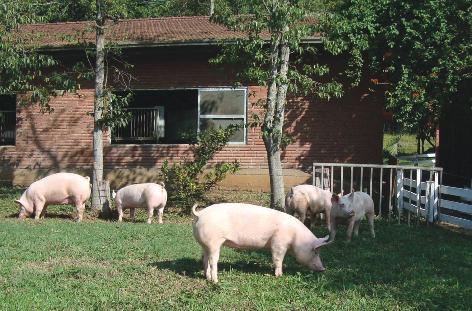
Regionalisation is an OIE concept regarding animal health issues which is not yet accepted by all parties, especially large importers. However, some experiences are proving it indeed has a sound basis. The Brazilian state of Rio Grande do Sul developed its own swine health projects and first results are already being felt.
By Dr Rogerio G.T. da Cunha and Luciana Martins
Bless you! Once limited to human beings, those two words may soon start to be applied to animals. The reason is the extreme concern with animal health nowadays, frequently in connection with our own health – the novel influenza A virus (H1N1) outbreak is out there proving it. The other side of the coin, and a frequent complaint from exporters, is the potential for it to be used as a non-tariff trade barrier. In between is OIE (World Organisation for Animal Health), which assigns countries with green, yellow or red status labels regarding export.
Rio Grande is located in a zone, free of diseases like Classical Swine Fever and Aujeszky’s Disease. (Photo: courtesy of Jaqueline Manica.)
For continent-sized countries, such as Brazil, a further complaint from the agribusiness sectors, especially those related to meat products, is that an all-or-none criterion is unfair. The reasoning is that local realities are very different, and one may have intra-border measures as effective as those between countries. In that context, the concept of regionalisation of disease status originated, defended by those countries, but not accepted yet by all. A closer look at some local measures taken by Brazilian states in light of those issues may help the learning process.
Splitting countries
In their own words, OIE is ‘the intergovernmental organisation responsible for improving animal health worldwide’, and is recognised as such by the World Trade Organization (WTO). With regard to international trade, one of the tools supporting that aim is their Terrestrial Animal Health Code, which sets standards for both exporting and importing parties. The aim: to avoid the transfer of pathogens between countries.
Of interest here is the code’s concepts of regionalisation (or zoning) and compartmentalisation. According to the code, a zone/region “means a clearly defined part of a territory containing an animal subpopulation with a distinct health status with respect to a specific disease for which required surveillance, control and biosecurity measures have been applied for the purpose of international trade.”
On the other hand, a compartment “means an animal subpopulation contained in one or more establishments under a common biosecurity management system with a distinct health status with respect to a specific disease or specific diseases for which required surveillance, control and biosecurity measures have been applied for the purpose of international trade.”
In other words, a region refers more to geographical or naturally defined areas, while a compartment has a more specific focus. In both cases, this implies that a country may not possess a single status in relation to an animal disease. Instead, several different statuses may be conferred. Needless to say that one concept does not exclude the other.
However, the obligations of members in regard to the code are not as binding as the WTO rules. OIE rocedures in regard to disputes are also informal and based more on agreements, with no rights for sanctions.
Think global, act local
Rio Grande do Sul is the southernmost Brazilian state, the second-largest of the country’s fast growing pork production industry. The state is also an important poultry and beef producer. Wanting to tap into its natural aptitude for meat production and with an eye on the export market, the state started its own plans for animal health. Among the programmes, there is one specifically aimed for pigs. Such programme goes a bit beyond the National Program for Swine Health, from Brazil’s Ministry of Agriculture, Animal Husbandry and Supply (PNSS – see box).
The state structured its actions along a series of strategies. According to João Carlos Machado, Secretary of Agriculture, Animal Husbandry, Fisheries and Agribusiness from the state, in one of them, they targeted specifically to modernise the sanitary defence infrastructure. The aim is to improve the quality of the public services they provide. Such modernisation includes hiring personnel, renewing their car fleet, investments on IT, plus some actions on the physical infrastructure. This even includes the building of six new border control points, something that has great importance in the light of compartmentalisation claims.
The second strategy is a project of certification and traceability of agricultural and animal products from the state. “Through this project we want to meet the challenge of opening new markets, through a guarantee of quality, good sanitation and a certification of origin. At the end, we achieve a many-fold benefit, and for all elements in the food chain. Consumers benefit from better products, with a guarantee of sanitary quality. The producer adds value to its products. And the region wins through the opening of new markets,” explains Machado. Amidst several specific actions, the project includes auditing and inspection at the farms. They are even moving forward, and the government is proposing a new legal framework, with a law project specifically aimed towards regulating animal sanitary defence.
Shared management of animal health
Ildara Vargas, coordinator of the state programme on swine health, spoke recently about details of the programme at Rio Grande do Sul. It started with an analysis of the infrastructure of sanitary defence and of actions related to the PNSS, something shared with two other southern states. Building up on this analysis, the state implemented its specific actions. The strategy was implemented with all players in the chain. At local level, they carried out a detailed survey and registration of the production units.
Not only that, but other elements of the production chain were also surveyed (suppliers, transporting companies, vets, and so on). The actions included active and passive vigilance; certification of the breeding units, according to the rules of the National Plan; attention to sanitary events; control and checking of animal transit, including combat to informal movements; control of events involving animals; and sanitary education.
At local units the actions were taken to attack the problem from different angles. In terms of risk, an attempt was made to identify properties for which more attention was needed, and also to map the risk points. “For those, we set up a schedule of visits for epidemiologic clinic monitoring. The mapping includes even independent and subsistence producers. However, we also aimed to build capacity of the local producers through a programme of so-called sanitary education. Such a programme included both person-to-person and indirect communication campaigns,” details Vargas.
Animal transit is also more tightly controlled, and informal movements are under attack. Last, complementing the certification of breeding units, they carry out analyses every six-month periods, and a yearly evaluation of the vulnerability risk.
Classical Swine Fever
Regarding Classical Swine Fever (CSF), the state is part of a disease-free zone (since 2001), with the last outbreak detected in 1991. In order to maintain that status, a series of specific measures was established, besides routine vigilance actions. This included serological monitoring every six months. Besides breeding farms, this monitoring includes discard breeders at abattoirs and units bordering reserves with wild boars. A serological inquiry at subsistence units completes this line of action.
The programme is complemented by a qualitative analysis of the risk of reintroducing the disease, carried out at a municipality level. “The analysis is based first on an evaluation of the vulnerability of the place, that is, its receptivity to CSF. Next comes an assessment of the preventive actions being carried out both by the Animal Health Services and the community. Last, there is an appraisal of the actual conditions of the day-to-day sanitary activities of both those players,” completes Vargas.
For another disease of concern, Aujeszky’s Disease, the last cases were detected in 2003. In this case sanitary slaughter was employed. For both diseases, vaccination was prohibited, and a contingency plan adopted. Besides its preventive nature, the whole programme at the state also counts with emergency measures. The capacity-building of the official veterinarians is complemented by a broad training on swine sanitary emergencies.
This training includes simulations of CSF cases (with participation of all players involved), talks, analyses of the legislation, planning and field research, and the preparation of local contingency plans. A special group was formed to be alert to suspicions of emergency diseases, in order to act as a Task Force. All in places, things are getting ripe now for the next phase, that is, opening new markets, increasing exports, and profiting.
PNSS – The National Plan Among its several lines of action, the Brazilian Ministry of Agriculture, Animal Husbandry and Supplying has a specific project for swine health. According to the programme, the ministry focused on the diseases of OIE’s list, both obligatory notification and exotic. In the first group there are Classical Swine Fever (CSF), Aujeszky’s Disease (AD), brucellosis, tuberculosis, scabies, leptospirosis, foot-and-mouth disease, rabies, cysticercosis, and hydatidosis. Among the exotic diseases the list includes African Swine Fever (ASF), encephalitis (through Nipah virus), Porcine Reproductive and Respiratory Syndrome (PRRS), swine vesicular disease, transmissible gastroenteritis, Japanese encephalitis, trichinosis, Teschen’s disease, porcine respiratory coronavirus, porcine epidemic diarrhoea, hemagglutinating enchephalomyelitis. Those are diseases with strong dissemination capability, serious economic or sanitary consequences and impact on international trade. The programme involves two main groups of actions. On one hand, they work towards the identification, preservation and enlargement of disease-free regions. The other line of action involves the certification and monitoring of units of swine breeders. Brazil is now free of ASF, has now a large CSF-free zone, and is working hard on AD and FMD. Regarding AD, the country’s strategy is also regionalisation, and some states are free from the disease for a few years already. Source: Ministry of Agriculture, Animal Husbandry and Supplying. |
Source: Pig Progress Volume 25 nr 7
Join 18,000+ subscribers
Subscribe to our newsletter to stay updated about all the need-to-know content in the pigsector, three times a week. Beheer
Beheer

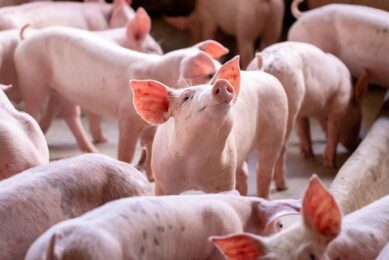
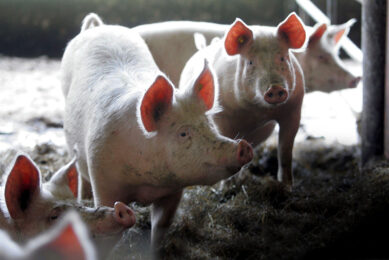
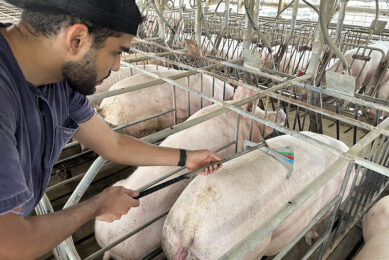
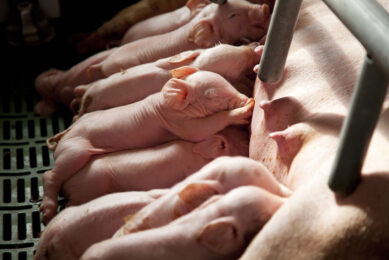





 WP Admin
WP Admin  Bewerk bericht
Bewerk bericht